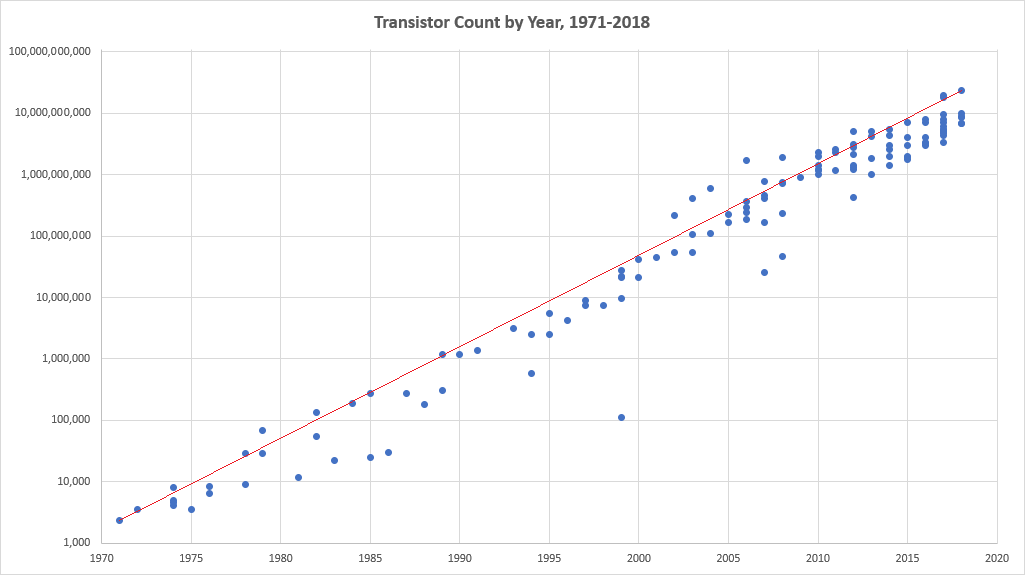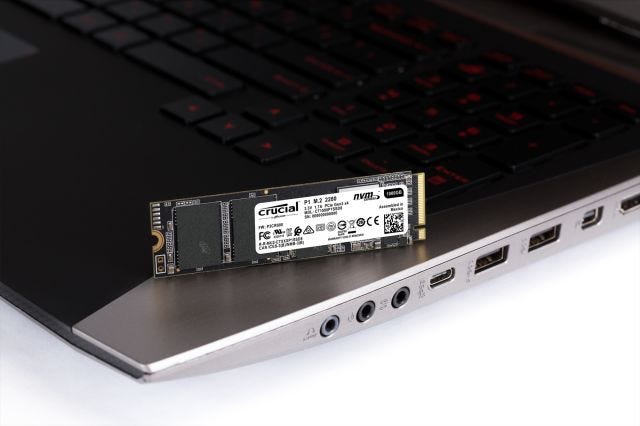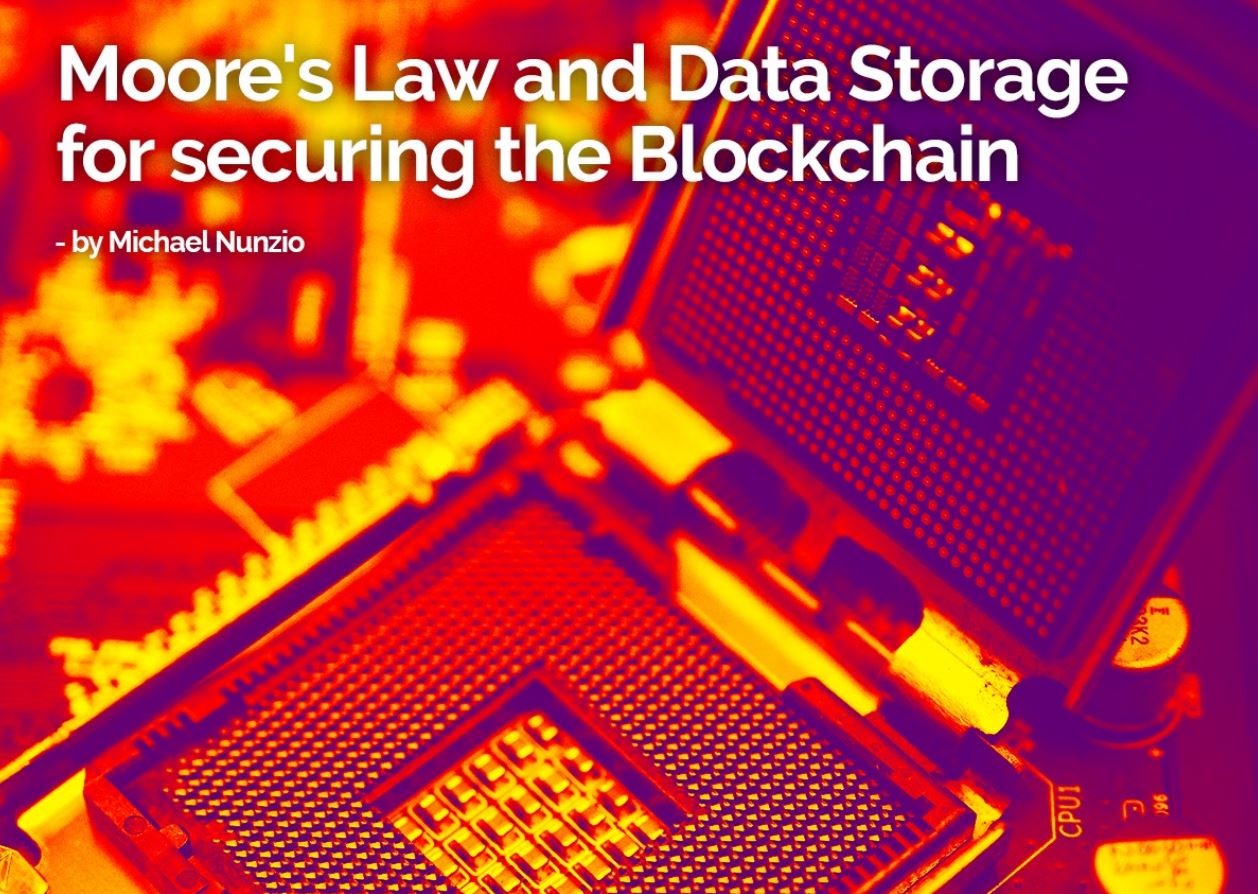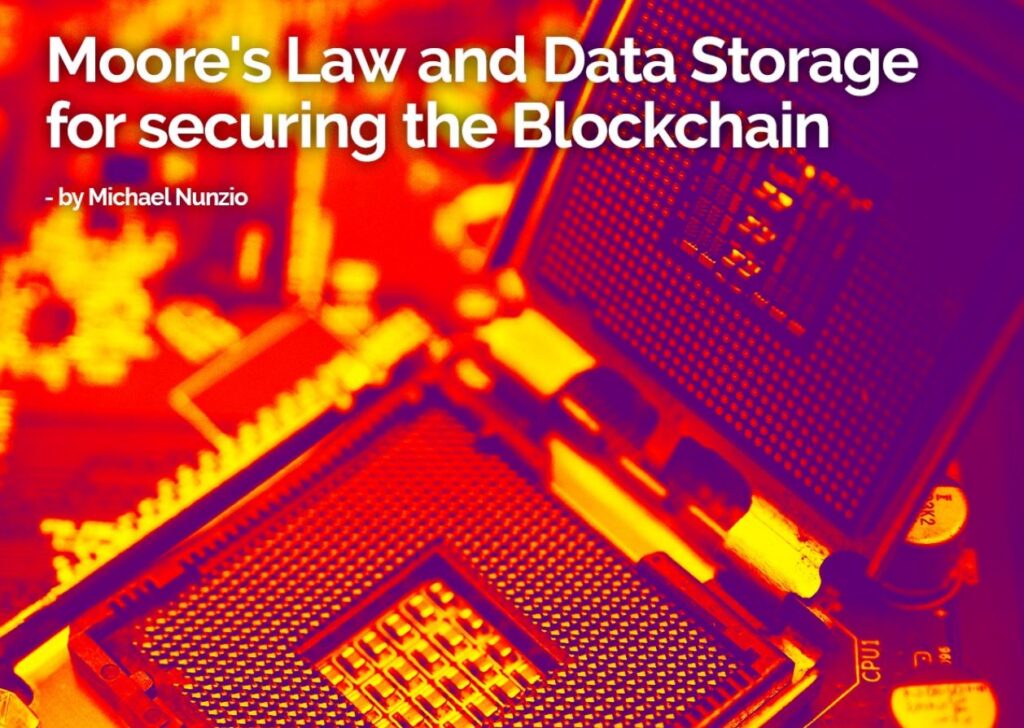The small blocker camps want you to believe that Moore’s Law is dead in the water. Unfortunately for them, this isn’t the case.
While it is true that at Intel they have hit some hurdles, but mainly because the costs vs benefit. As everything these gains comes in waves, when there is more demand for more growth, the supply will follow closely. Intel are lucky enough to have done prior research and development and have been riding on their laurels. The last few years Intel haven’t really released smaller chips, but have just made small gains improving their efficiencies and with their current 14nm lineup.
Other companies have picked up Intel’s where Intel is lacking. In this case it’s the big phone manufacturers pushing transistor growth into 2019. Huawei with their Kirin 980 chipset, Samsung outsourcing to Qualcomm with their Snapdragon 8cx and Apple with their A12 Bionic chip.
That all being said, Bitmain announced recently they are releasing a more efficient 7nm Bitcoin mining chip using Taiwan Semiconductor Manufacturing Company’s FinFet technology.
Eric Martin has a fantastic more detailed article relating to this.

Data storage speed, latency and costs have improved drastically as well.

The NVMe protocol has enabed storage technology to be pushing the limits with last years release of the fastest SSD’s on the market — the Samsung SSD 970 PRO NVMe M.2 512GB with a maximum sequential-read speed at 3,500MB/s and its maximum sequential-write speed at 2,500MB/s for $167.99 USD at the time of writing.
If you aren’t concerned about speed as much, there are plenty of other options which have a fantastic dollar to gigabyte ratio such as the Crucial P1 500GB 3D NAND NVMe PCIe M.2 SSD for only $79.99 USD with a 1,900 MB/s maximum sequential-read speed and a 950 MB/s maximum sequential-write speed.
Other options such as a Solid State Hybrid Drive such as this Seagate 2TB FireCuda Gaming — 7200 RPM SATA 6Gb/s 64MB Cache 3.5-Inch Hard Drive can be had for around $99.99 or more traditional full mechanical hard drives like the Seagate BarraCuda 7200 RPM 3TB SATA 6Gb/s for $72.42

As you can see below, the cost for SSD’s has been coming down over the last 18 months into the $220 range for 1TB drives and $180 range for the 512GB drives.


Keep all this in mind when you hear the small blockers say that Moore’s Law is dead. Not only is it not dead, but the technology that we rely on for securing the blockchain is becoming cheaper as well.
If you liked this article feel free to donate bitcoin cash as I spend my own time researching to write these articles and compile/produce them.
bitcoincash:qpz29uxj0gtgmqgmyumjcwe6yj7wc7qlnvpzaktz99
Sources:
https://pcpartpicker.com/trends/price/internal-hard-drive/
https://en.wikipedia.org/wiki/Transistor_count#Microprocessors
https://hackernoon.com/moores-law-is-alive-and-well-adc010ea7a63
This article was sourced from Medium.com

